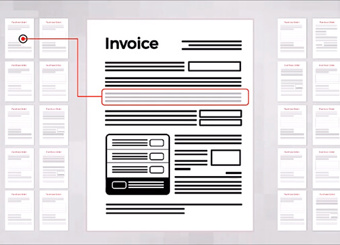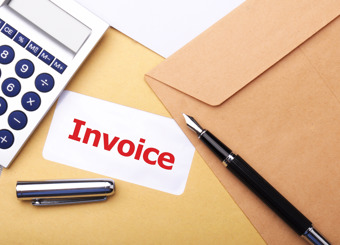What Is AP Automation Software?
Despite the challenges the world is facing, CFOs are optimistic and actively looking to modernize their finance teams.
Per, a survey of CFOs, about eight of ten CFOs who responded sped up digital transformation in 2020 due to how COVID-19 changed B2B payments. This is a trend that's continuing and expanding in 2022. It's a movement that has CFOs and finance professionals investing in solutions such as accounts payable (AP) automation software.
Interested in discovering more about AP automation's best practices and benefits? Check out our extensive AP Guide today.
In this article, we're taking a detailed look at how AP automation software works, the way it enables invoice and payment automation, and how our solution integrates with the majority of ERP systems on the market.

Understanding How AP Automation Software Works
The best place to start with understanding AP automation software is answering two common questions.
What is Accounts Payable Automation Software?
It's a solution that empowers companies to electronically manage large volumes of invoices and payments between themselves and their suppliers/vendors. The right solution does this while allowing you to maintain transparent control of your processes and funds.
AP automation software is less of a tool to replace humans, and more of a tool that empowers humans to do their work more efficiently and spend their brain power in more fulfilling areas.
How Does AP Automation Work?
Accounts payable automation works via using advanced AI technology such as optical character recognition (OCR) and machine learning. The combination of technology creates an electronic and low touch, even no touch, process for handling both invoices and B2B payments.
An AP department utilizing AP automation is easier to describe than you think. Start by imagining all the tasks your AP team completes on a daily, weekly, and monthly basis. Pick out the manual ones that are needlessly tedious and mind-numbing such as manually entering data from an invoice or signing a paper check. Remove those.
Next, eliminate everything you thought of that required any form of paper, including and especially paper invoices and paper checks.
That's it, that's the end result of AP automation. It automates manual tasks that don't benefit from a uniquely human touch and gets rid of paper by converting you over to an electronic invoice and payment world — which eliminates 85% of costs associated with antiquated paper processes.
Say goodbye to convoluted invoice processes and paper in its entirety, and say hello to a more efficient and secure AP department!
Best of all, implementing AP automation is not a process that takes years to see a return on — contrary to popular belief. Ready to start? Reach out to our expert team or keep reading for a deeper dive into AP automation.

Invoice Processing & Payment Automation
Times in the B2B world are changing. For example, paper checks are on the way out according to this recent survey. Nearly 42% of B2B payment practitioners report that they are 'very' or 'somewhat likely' to convert most of their B2B payments to suppliers to electronic payments instead of checks.
Where to Start with AP Automation?
Most CFOs, controllers, and other accounts payable professionals will answer with, invoices! This is one of the easiest areas to automate that comes with a quick ROI.
Check out this explainer video for details on how our OnPay Connect Invoice solution can do this for your finance department.
To sum up, though, invoice automation is the process of converting paper invoices into electronic invoices (eInvoices), and using OCR technology to enter them into a digital workflow and approval process. Our solution also matches the original invoice to supporting documents, such as purchase orders, in order to validate its authenticity and catch fraud.
Invoice automation also auto-archives invoices for easy tracking, retrieval, and tax information.
But you're not done after automating invoices! To have a truly automated AP department, you have to follow-through on your move and automate payments as well.
As discussed above, most forward-thinking companies and finance professionals are moving away from paper checks. This is no surprise, after all, experts like of Bank of America have estimated that most businesses spend more than $10 on each check that's cut, with the average falling in the range of $4 to $20.
For a detailed breakdown on how the above estimates are reached, check out our AP FAQ.
But What are Your Options for B2B Payments?
Payment automation lets you make payments with less headache, saving your team time and money.
And, with the right payment partner, it can be done just as easily from your breakfast table as your office boardroom. Move into the high tech, low touch economy with payment automation!

AP Automation Software Integrates with ERP Systems
ERP integration is a key part of successful AP automation initiatives. Our clients often, understandably, want to maintain their existing bank relations and to continue using the ERP they're familiar with. Which is not only something we can do, it's one of the best ways to enable AP automation.
We can integrate with any ERP and any accounting system — in under 30 days.
Whether your current ERP supports multiple payment file types, or can only generate a check file, we can integrate with it. The right AP automation software seamlessly migrates users to electronic payments of all types and transmits to any bank(s).
Medius can do all this, with minimal to no impact on your IT team.

Conclusion
Now that you understand what AP automation software is, how it works, and how enables invoice automation, payment automation, and ERP integration — the next step is to invest in it! Today's technology has made the process quick and non-disruptive.
Here at Medius we provide a AP automation software that reduces AP costs while delivering the highest security protections and providing a transparent audit trail of the payment process. As a cherry on top, our expert team prioritizes client satisfaction!
If you’re ready to start a conversation about advancing your AP department forward with our help, reach out today.
Originally published February 2021. Updated for content and quality on October 5th, 2022.






